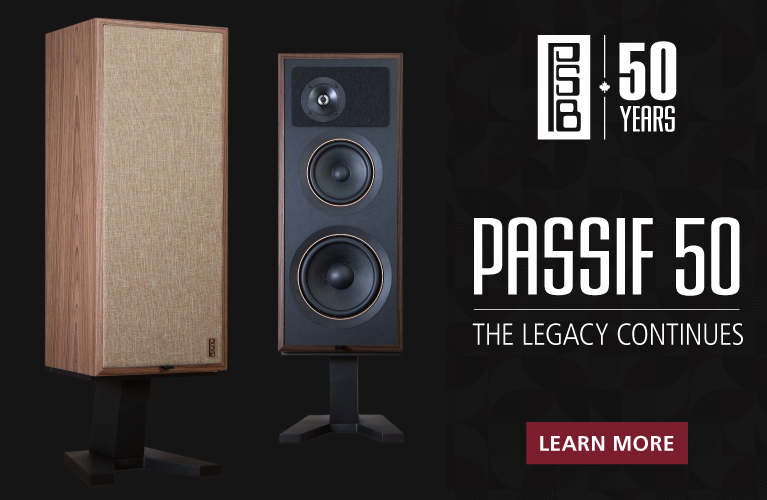Note: Measurements taken in the anechoic chamber at Canada's National Research Council can be found through this link.
 For years now, Magico has taken a military-grade approach to making loudspeakers. Aluminum is the material most often used for their speaker cabinets, no construction method seems too extreme, and no expense is spared for the parts. All of this makes Magico speakers very heavy, and handling them as difficult as it is to afford them.
For years now, Magico has taken a military-grade approach to making loudspeakers. Aluminum is the material most often used for their speaker cabinets, no construction method seems too extreme, and no expense is spared for the parts. All of this makes Magico speakers very heavy, and handling them as difficult as it is to afford them.
Jeff Fritz once owned pairs of Magico’s Q7 Mk.I and Mk.II speakers, which cost over $200,000/pair (all prices USD), weighed 750 pounds each, and had to be moved around his listening room. “That was a challenge!” he said to me. Last year, for SoundStage! Ultra, Hans Wetzel reviewed the A3 ($12,300/pair). It’s Magico’s least-expensive floorstander, but it still weighs 110 pounds -- almost as much as Hans himself. Even Magico’s S1 Mk.II floorstander ($18,000-$22,325/pair, depending on finish), which Hans reviewed for this site, is a bit of a brute despite having only two drivers -- each speaker weighs 120 pounds.
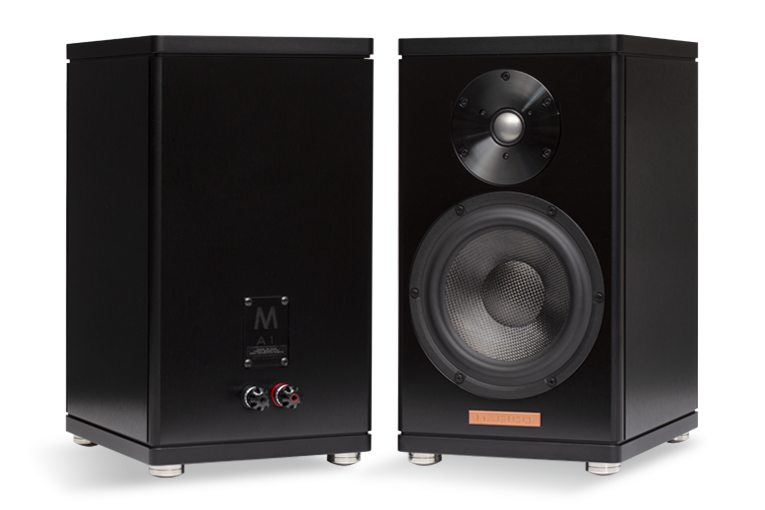
I, too, have felt the Magico pain. In 2009, I was the first SoundStage! writer to review a Magico model, the V2 ($18,000/pair, discontinued), followed, in 2013, by the original S5 ($29,400-$32,500/pair, depending on finish, discontinued) -- both floorstanders and respectively weighing 120 and 195 pounds each. Wrangling the V2s wasn’t that bad, but the S5s got to me -- their weight and size, combined with rounded backsides that were hard to get a grip on, almost killed me and the guys who were helping me schlep them up to my third-floor listening room. In fact, it was so hard to move the S5s in a way that was safe for both us and the speakers that I wondered if I’d ever want to review another Magico.
But when an opportunity arose to review the next Magico offered to us, a minimonitor -- the two-way A1 ($7400/pair), Magico’s lowest-priced loudspeaker ever -- I thought: It’s a small speaker. It needs a stand. How heavy could it be?
Description
The A1 weighs 48 pounds, which doesn’t sound like much -- until you pick it up. With a cabinet made entirely of 3/8”-thick aluminum, and with three 3/8”-thick aluminum braces inside (one resting on the underside of the top panel, the other on the top of the bottom panel, the third slicing through the middle), and measuring just 15.6”H x 8.5”W x 12”D, it’s so dense that you’d swear you were holding a solid block of concrete. If you dropped one on your foot, I have no doubt it would break most of your foot bones on its way toward making a crater in a wooden floor. So don’t.
While that kind of solidity is something to behold -- and hold -- stiff, dense cabinet materials don’t automatically result in a good speaker cabinet. Anyway, aluminum isn’t necessarily the best material for this purpose -- it’s a metal, after all, and when not properly damped it rings like a bell. Not good. But the A1’s interior is so well braced and damped that it didn’t ring once in the months I had it. I often struck the speakers with a knuckle at various points on their surfaces, and never heard anything but a dull thuck. One of the hallmarks of Magico speakers has long been cabinets that contribute few or no colorations to the sound. In its rock-like solidity, the A1 seems to be no exception. And the quality of finish work on my review samples was beyond reproach -- I saw no flaws.
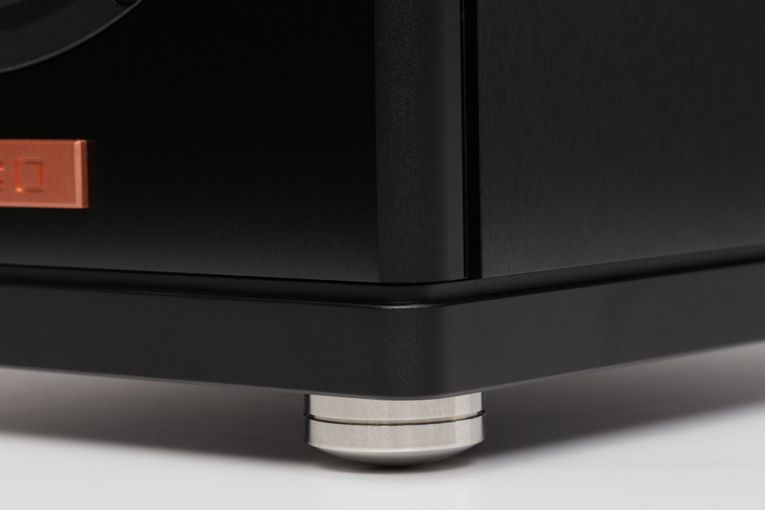
However, the A1, like the other models in Magico’s A series (the most recent is the floorstanding A5, for $21,800/pair), is available only in black. This, in combination with its squat, boxy shape, makes the A1 not exactly pretty, even with Magico’s logo engraved on the copper nameplate low on the baffle -- it looks less sporty, fun, and elegant than dead serious. Nor are grilles included; if you want those -- a good idea, to protect the drivers -- they’ll cost you another $400/pair.
Other than being unusually heavy for its size, the A1’s weight didn’t create the sorts of setup challenges presented by, say, the 195-pound S5. Still, I had to consider some things that I don’t with most minimonitors, which typically weigh 20-30 pounds. Magico ships the A1s with four machined-aluminum feet per speaker, to screw into threaded holes in their bottom plates. These feet aren’t spiked but round-bottomed -- you can sit the speaker on a shelf or furniture and not worry about scratches. However, you do have to be sure that the shelf can support the speaker’s weight. I can easily see an A1 -- let alone a pair of them -- bringing down a shelf screwed into wall studs.
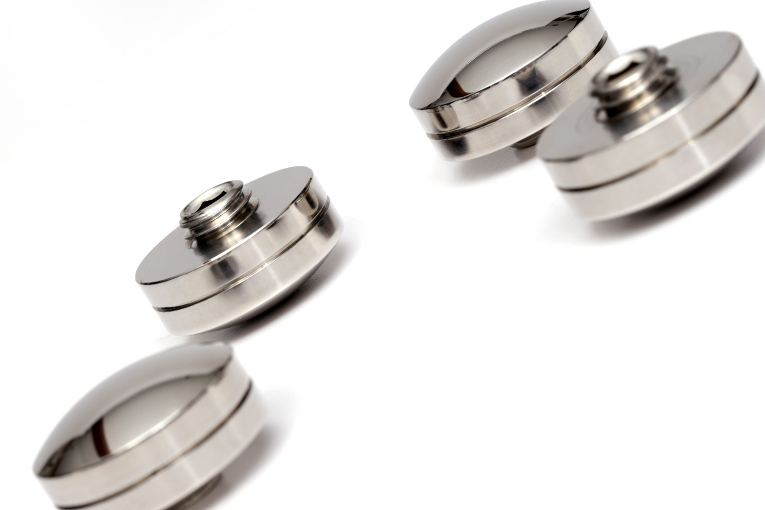
If you use stands, they should be robust -- and not all stands are. I recently used a pair of speaker stands that came with a warning: they were not to be used to support speakers weighing more than 30 pounds each. So for my critical listening I set the A1s atop 24”-high, four-column Foundation stands, whose columns, top, and base are all welded together -- they were plenty strong enough. But the A1’s bottom plate is slightly wider and deeper than the Foundation’s footprint, which made each speaker-stand combo a bit top-heavy. Had an A1 come crashing down, it would have done serious damage to whatever or whomever it fell on. Better to use stands with a wider, deeper stance.
As in all of Magico’s current speaker models, the A1’s drivers are designed in-house: a 1.1” beryllium-dome tweeter with neodymium magnet (also used in the A3); and a 6.5” midrange-woofer with 1.5” voice-coil and a cone comprising a sandwich of carbon fiber that’s had graphene added and foam. Magico says that the graphene makes the sandwich more rigid, which means the cone can be thinner and therefore lighter, for better transient response. The drivers hand off to each other at 2.5kHz.
On the rear panel are top-quality binding posts from WBT, and an aluminum nameplate that can be unbolted to grant access to part of the speaker’s interior, presumably in case service is needed. But there’s no port anywhere, another Magico hallmark -- founder Alon Wolf feels that sealed enclosures produce the most accurate bass response.
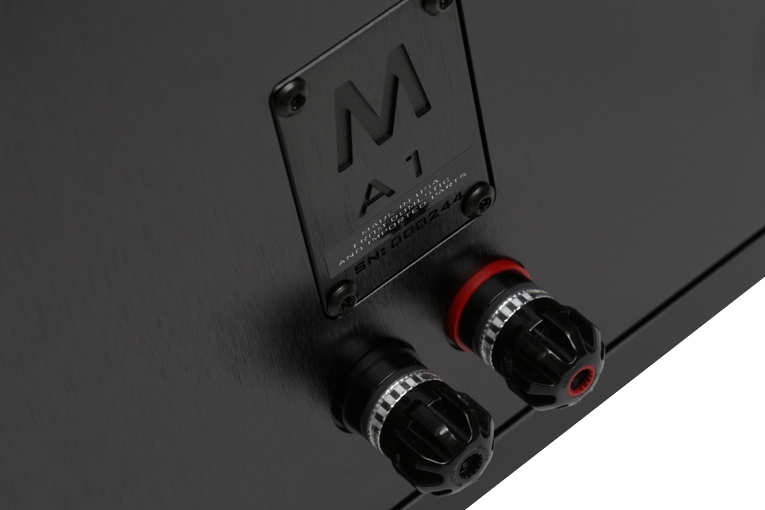
Magico’s specifications for the A1 include a sensitivity of 84dB/2.83V/m; that’s low, and likely why they recommend a minimum of 50W (max 150W) of amplification -- far more than the 20W minimum specified for many two-ways. The specified nominal impedance is a pretty typical 4 ohms, the frequency range 35Hz-50kHz.
Systems and sounds
Because of the Magico A1’s lowish sensitivity, I first wanted to try it with an integrated amp of considerably more modest power output than I typically use in my reference system, just to see what was possible. So the review samples’ first stop was my living room, which measures 19’L x 15’W x 8’H and houses the lower-cost secondary system that I use for my “System One” column. In use was Schiit Audio’s Ragnarok 2 integrated amplifier, specced to output up to 100Wpc into the A1’s 4 ohms. I placed the A1s on 24”-high Monoprice Monolith stands and connected them to the Ragnarok 2 with QED XT25 speaker cables. The digital source was a Schiit Bifrost 2 DAC connected to the Ragnarok 2 with J&D balanced interconnects. I streamed music from Tidal via a Chromecast Audio streamer, connected optically (TosLink) to the Bifrost 2.
From the get-go, the A1s sounded considerably fuller, richer, and more detailed than the minimonitors that usually inhabit this system, as they should -- all of those other speakers have cost less than $1500/pair. With the Ragnarok 2 set to its highest gain level, this combo could produce great-quality sound at reasonably high volumes in my fairly big room -- the sound was loud enough that I could happily live with it if I had to. But the Schiit integrated couldn’t drive the A1s to very high volumes. Whereas with two-ways of typical sensitivity I’d normally have the Ragnarok 2’s volume knob set to just past its halfway position for the volume I was hearing, I had to bump it up to the three-quarters mark to get the same sound-pressure level from the A1s. That left little of the Schiit’s total range of volume, let alone headroom for dynamic passages. What this means is that the A1s need more power than do most minimonitors. I feel comfortable recommending an integrated or power amp that can deliver 100Wpc (8 ohms) or more, with twice that output into 4 ohms -- such specs usually indicate a ballsy design.
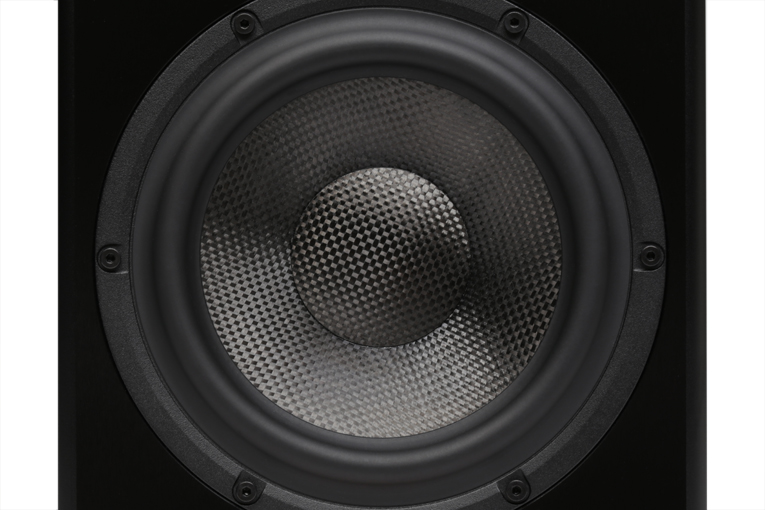
For more critical listening, I moved the A1s up to my big room -- it measures 36’L x 16’W x 8’H, though I use only the front half for my listening space. (The room’s rear half is used as a combination office, photography studio, and storage area.) My source was an Asus Zenbook UX303U SSD-based laptop running Windows 10, Roon, and Tidal, connected to an EMM Labs DA2 Reference DAC with a 10’ AmazonBasics USB link. The DA2 Reference was hooked up to an EMM Labs Pre2 Reference preamplifier with Crystal Cable Standard Diamond balanced interconnects, which I also used to link the preamp to a pair of Constellation Audio Revelation Taurus monoblocks specified to output up to 500W each into 8 ohms, or an “engineering evaluation” stereo amp from a new Danish company, Purifi, specced to output up to 200Wpc into 8 ohms or 400Wpc into 4 ohms. (Purifi doesn’t intend to put this amp into production; instead, the mono class-D amp modules used in it, which are purported by Purifi to have the lowest total harmonic and intermodulation distortion of any amplifier type, are being sold to other companies. The first product to use these Purifi modules is NAD’s Masters Series M33 integrated amplifier-DAC, which should be on the market soon for $5999.) With the Constellation monos I used Nirvana Audio S-L speaker cables, but with the Purifi I used custom cables Purifi had sent me -- the amp requires Neutrik speakON connectors, which none of my cables have.
I set the A1s atop the Foundation stands, toed them in 10° (later I tried other angles, but 10° turned out to be best), and sat down to listen. I expected to be disappointed, even with the A1s driven by the Taurus monos. After all, I’d just finished listening to Vivid Audio’s four-way, five-driver, Giya G2 Series 2 floorstanders ($50,000/pair), which put out deep, seriously powerful bass; while the A1s are small stand-mounts with sealed cabinets placed way out in the room, about 5’ from each sidewall and 7’ from the front wall -- positions that are a little unfair to small speakers, but a good test of how they perform with little benefit of room gain.
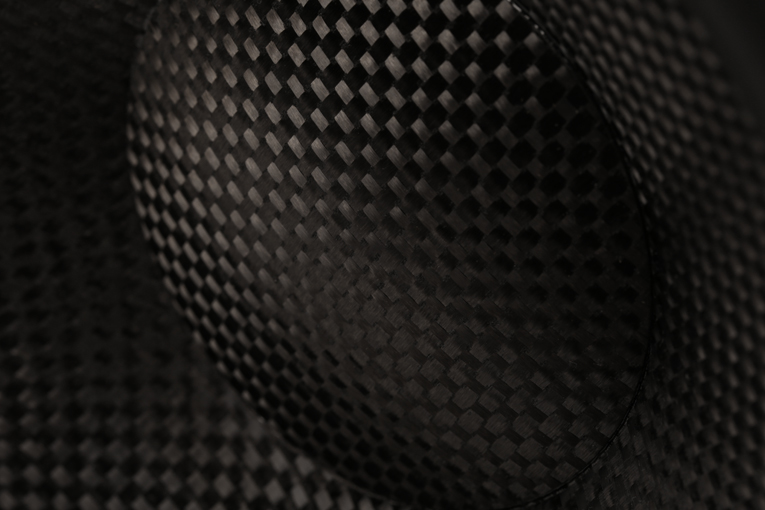
What happened was the opposite. In the title track of Lana Del Rey’s Norman Fucking Rockwell! (16-bit/44.1kHz, Interscope), when the piano enters 25 seconds in, I heard a fullness and bass depth that it hadn’t occurred to me the little A1s might be capable of -- they didn’t reproduce all of the bottommost octave of the audioband (20-40Hz), but even sitting way out into the room, they dipped into it. To ensure that what I’d heard was no fluke, I played the entire album and found that the A1s’ sound definitely had a weight and fullness that belied their size.
I was also struck by how smooth Del Rey’s voice sounded -- it had a purity achieved by only the finest speakers I’ve heard. Her voice also had a hint of richness, which made its aural image hang more tangibly in space. “Plenty of presence,” I jotted in my notes. However, I could tell I was losing a little of the Giyas’ openness and transparency -- throughout NFR!, the A1s’ soundstage wasn’t quite as wide or deep as the Giyas’, nor was the Magicos’ sound entirely divorced from the speaker cabinets themselves, a trick the Vivids consistently pull off. But those differences were far smaller than the nearly sevenfold difference in these speakers’ prices.
Male voices got even healthier doses of presence from the A1s, which I liked -- it made these little speakers sound even more robust. For example, in “Glow in the Dark,” from Iggy Pop’s Free (16/44.1 FLAC, Loma Vista), which I streamed from Tidal, Pop’s voice . . . well, it popped onto the soundstage with such fullness and presence that I had trouble reconciling it all with the A1’s size. Later in this track, the drums, set way back on the stage, enter strongly -- through the A1s they sounded not only convincingly positioned 20’ back from the front of the stage, but reproduced with startlingly massive heft and fullness.
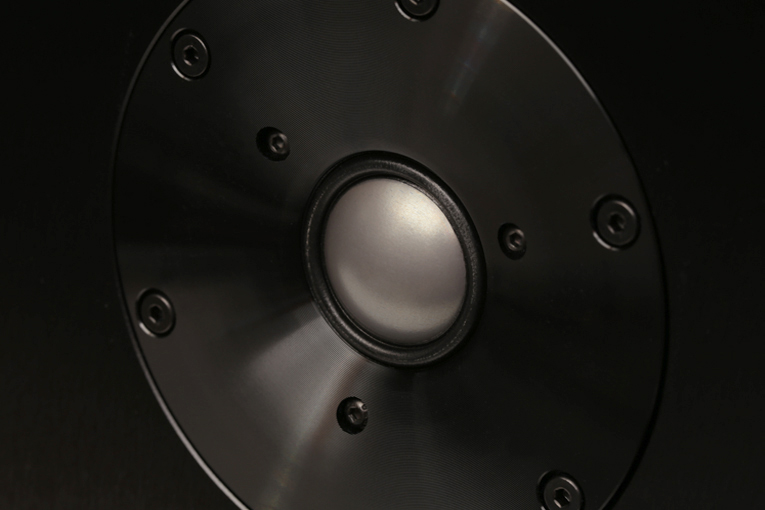
The same was true when I played “News,” from Dire Straits’ Communiqué (16/44.1 FLAC, Warner Bros./Tidal), my playing of this track inspired by Joe Taylor’s SoundStage! Xperience feature about the band’s first four albums. Pick Withers’s closing drum passage begins at 3:42, and at that point the soundstage spread out superwide, the sounds of the drums, mixed from very far left to very far right and everywhere in between, almost pummeling me. Other small speakers I’ve heard have had more upper-bass punch. Focal’s Kanta No1 ($6590/pair), which I reviewed last June and really liked, is roughly the size of the A1; it had more punch, but not nearly as much low-end extension -- I heard nothing below 40Hz. But with the A1s I did, and that made for a significantly better listening experience.
Impressed and surprised by the big-speaker sound I was hearing from the little A1s, I spent the rest of my time with them playing through my usual set of reference recordings and being consistently struck by the same things: full-sounding bass, beautiful smoothness through the midrange, and something else I haven’t mentioned till now: excellent high-frequency extension that was never too bright. This, too, surprised me, considering what I’d heard from Magico’s S5, which did sound a bit bright at times. Instead, the little A1’s high-frequency balance was just right, neither bright nor dull. From the lows through the highs, Magico has gotten the A1’s voicing exactly right.
Wondering if the A1’s big, weighty sound had anything to do with the huge and hugely expensive Constellation Revelation Taurus monoblocks, I switched to the Purifi evaluation amp, which offers less than half the power: 200Wpc into 8 ohms. I listened to the same tracks again and gradually realized that almost nothing about the A1s’ sound had changed -- the tonal balance was the same, the highs were just as extended and the midrange just as pure, voices were equally robust, bass just as extended, and the soundstaging and imaging were exactly as before. The differences were at best slight and, surprisingly, favored the Purifi. For example, in the final track from the Del Rey album, “Hope Is a Dangerous Thing for a Woman Like Me to Have -- But I Have It,” the subtle sounds of her lips moving as she sings softly into the microphone were more apparent through the Purifi.
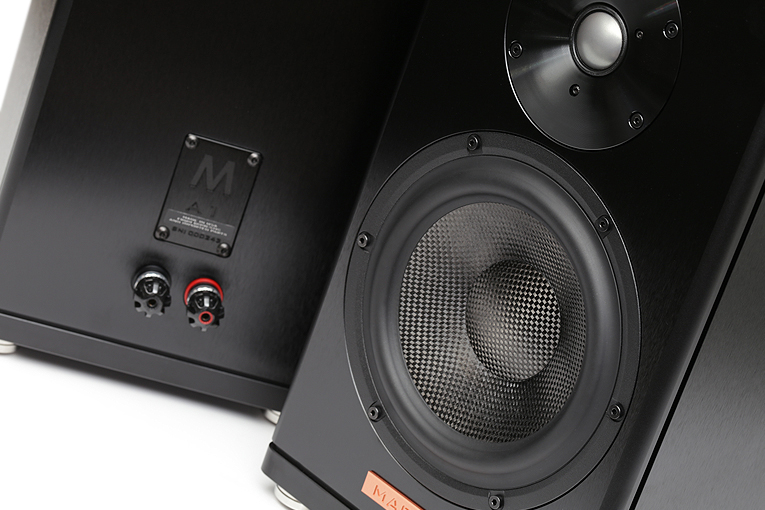
The Purifi could also drive the A1s as loud as they could go, which I confirmed by first testing the speaker’s limits with the Constellation monos and playing Michael Bublé’s Bublé! Original Soundtrack from his NBC TV Special (24/96 MQA, Reprise/Tidal) at boisterous volume levels -- quite a bit louder than my typical listening sessions, but not loud enough for a party or to damage your ears. I focused mostly on the medley of “It’s a Beautiful Day” / “Haven’t Met You Yet” / “Home,” because I find this track the most revealing of speaker strain and compression. At this highish volume level, whether I was using the Purifi or the Constellation amps, I deliberately never pushed the speakers into obvious distortion, as I could have done with the A1s or any two-ways, but I did push them to a point where I could hear the dynamic peaks flattening out, meaning the speakers were compressing. This wasn’t surprising in my large room -- small two-ways can take only so much power before they give up, particularly if they’re not very sensitive. Yet this test did tell me that while an amp that produces 100Wpc into 8 ohms would be the minimum I’d choose for a pair of A1s, I wouldn’t go much beyond that -- you don’t want to put gobs of power into these small speakers. Magico recommends up to 150Wpc, which seems spot on.
Conclusion
In the first half of the 2000s, when I reviewed a lot of two-way minimonitors, the notion of such a speaker costing in the high four or even low five figures sounded foolish to me -- few speakers could come close to justifying so high a price. One of the most expensive I remember was Krell’s LAT-2 ($10,000/pair), ca. 2001, which, like the Magico A1, had a heavy, all-aluminum cabinet. While the Krell’s cabinet must have cost a lot to make, as the A1’s probably does, its sound couldn’t hold a candle to that of the best two-way minimonitors of that era, most of which cost less than $3000/pair.
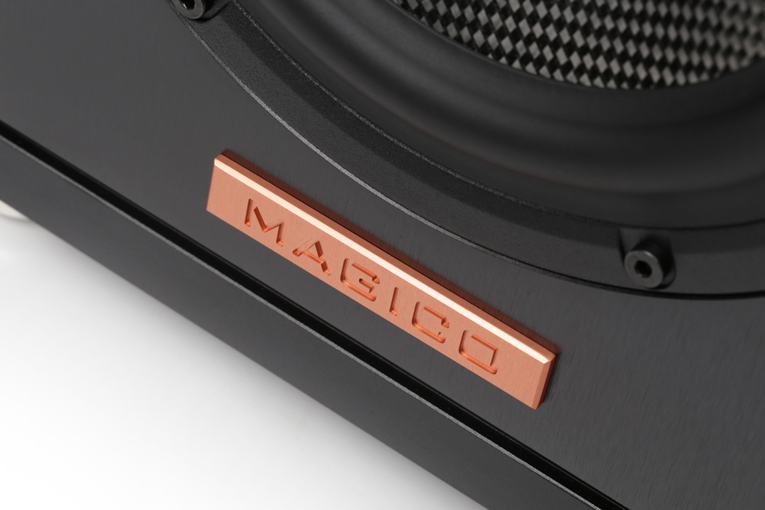
My attitude has changed with the times. Nowadays, many companies produce two-way minimonitors priced in the high four and low five digits -- speakers that not only look as if they should cost that much, but sound it. Magico’s A1 is one of them. The all-black A1 isn’t beautiful to look at, but it’s extremely well built, and very accomplished in how it sounds when given enough power -- its full, rich, superbly voiced sound belies the speaker’s size, and has a purity through the midrange and highs that made it intoxicating to listen to. If my room were even a bit smaller, I’d consider buying a pair of A1s to use as my reference stand-mounted speakers. This minimonitor with a maxi sound has surprised me more than any other audio product in a long while.
. . . Doug Schneider
das@soundstagenetwork.com
Magico A1 Loudspeakers
Price: $7400 USD per pair; grilles, add $400/pair.
Warranty: 90 days; with registration, five years parts and labor.
Associated Equipment
- Speakers -- NHT C 3 Carbon Fiber, Totem Acoustic Skylight, Vivid Audio Giya G2 Series 2
- Integrated amplifier -- Schiit Audio Ragnarok 2
- Preamplifier -- EMM Labs Pre
- Power amplifiers -- Constellation Audio Revelation Taurus Mono (2), Purifi engineering-evaluation unit
- Digital-to-analog converters -- EMM Labs DA2 Reference, Schiit Audio Bifrost 2
- Computer -- Asus Zenbook UX303U running Windows 10, Roon, Tidal
- Digital link -- AmazonBasics (USB)
- Analog interconnects -- Crystal Cable CrystalConnect Standard Diamond, J&D
- Speaker cables -- Nirvana Audio S-L, QED XT25
- Power cords -- Shunyata Research Venom HC
- Power distributor/conditioner -- Shunyata Research Venom PS8 with Defenders (2)
- Speaker stands -- Foundation, Monoprice Monolith
Magico
3170 Corporate Place
Hayward, CA 94545
Phone: (510) 649-9700
Website: www.magico.net






















